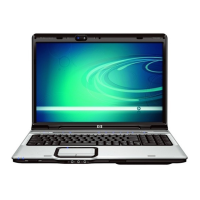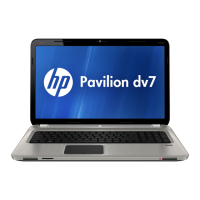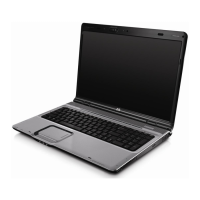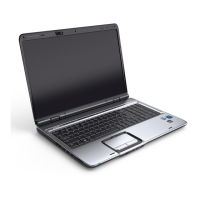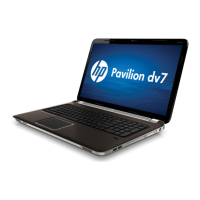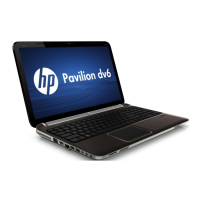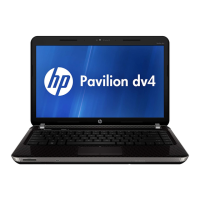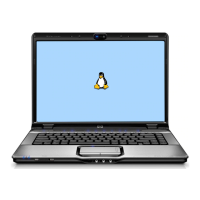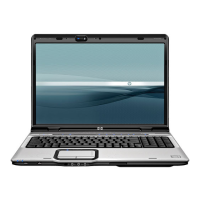
Do you have a question about the HP Pavilion dv9000 - Entertainment Notebook PC and is the answer not in the manual?
| VGA Port | Yes |
|---|---|
| Processor | Intel Core 2 Duo / AMD Turion 64 X2 |
| Display | 17-inch WXGA+ |
| Graphics | NVIDIA GeForce Go 7600 |
| Memory | Up to 4 GB DDR2 |
| Storage | Up to 320 GB SATA hard drive (5400 RPM) (depending on model) |
| Optical Drive | DVD±RW |
| Operating System | Windows Vista |
| Battery | Lithium-ion |
| Wireless | 802.11b/g |
| Bluetooth | Optional |
| USB Ports | 3 |
| Audio | Altec Lansing speakers |
Instructions for connecting the AC adapter to the computer for external power.
Explanation of the standby mode, its function, and how it affects system components.
Details on hibernation mode, its purpose, and precautions for its use.
Guidance on when to initiate standby or hibernation and how to shut down the computer.
Advice on using standby/hibernation with wireless communication and media playback.
Procedures for turning the computer on, off, and managing the display.
Steps to follow for emergency shutdowns if the system becomes unresponsive.
How to initiate standby mode and resume the computer from standby.
Instructions for initiating hibernation and restoring the computer from hibernation.
Steps to access the Power Options dialog box for system settings.
Instructions on how to show or remove the Power Meter icon from the taskbar.
How to select and customize power schemes for different usage scenarios.
Configuring password prompts for security when resuming from standby or hibernation.
Step-by-step guide for installing and removing the computer's battery pack.
Procedures for charging the battery pack to optimize life and display accuracy.
How to view battery status and charge information on the screen.
Understanding battery status percentages and estimated remaining run time.
System responses and alerts for low and critical battery levels.
Methods to address low-battery situations when external power or a charged battery is available.
Instructions on how to calibrate the battery pack for accurate charge readings.
Procedure for fully discharging the battery pack as part of calibration.
Procedure for fully recharging the battery pack after discharge for calibration.
Tips and settings to extend battery life during computer usage.
Guidelines for storing the battery pack when the computer is unused for extended periods.
Safety precautions and disposal information for used battery packs.
